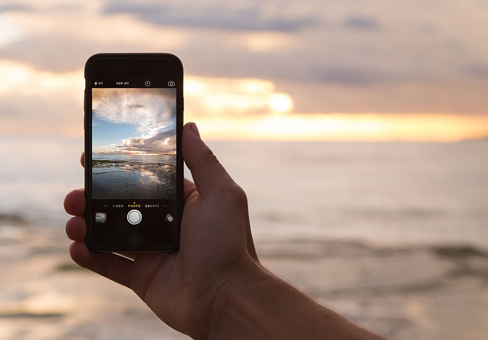London member resources: mobile and geomarketing
 Consumer behaviour has shifted from static, desk-bound, computer usage to dynamic, access-anywhere mobile capability. This transformation has important implications for marketers, in terms of future mobile strategy and location-based, geomarketing. Here we outline the resources available to London marketers, for mobile and geomarketing.
Consumer behaviour has shifted from static, desk-bound, computer usage to dynamic, access-anywhere mobile capability. This transformation has important implications for marketers, in terms of future mobile strategy and location-based, geomarketing. Here we outline the resources available to London marketers, for mobile and geomarketing.
Future-fit mobile strategy
On 22 October, our Practical Insights webinar, led by Allister Frost, CIM Course Director, considered how to create a future-fit mobile strategy. If you missed out on this exclusive member content, then you can catch up with the recording. Just login to MyCIM on www.cim.co.uk and go to Practical Insights webinars. It covers:
- Mobile living and its effect on buying behaviour
- Key considerations for effective mobile marketing
- Emerging mobile technologies and how you can use them
- The mobile future: what’s next and what could it mean for you
And what about geomarketing?
Geomarketing has been around for a few years now and has become a successful marketing tool, whether it’s targeted TV advertising or country specific web content. However, with the rise of cutting-edge technologies, geomarketing is taking on a whole new meaning. Tatiana Schofield, Chair of the Greater London region reports on the importance of geomarketing for London marketers seeking to ensure their mobile marketing strategies keep pace:
In marketing, geo (also called marketing geography or geomarketing) is a discipline within marketing analysis, which uses geolocation (geographic information) in the process of planning and implementation of marketing activities. See Wikipedia.
The breakthrough in geomarketing is geo-fencing (geofencing), which is a software feature on GPS or radio frequency identification (RFID) used to define geographical boundaries. This technology has many practical applications. It can be used by a logistics company to alert a customer about delivery times or by a restaurant to text a potential customer about offers when they enter a defined geographic area.
How is it being used?
Mobile app marketing is understandably at the forefront of the geomarketing trend. Foursquare is a local search and discovery service mobile app which provides a personalised local search experience for its users. It takes into account places a user goes to and things they like. Foursquare aims to provide highly personalised recommendations of the best places to visit in user's current location.
The creators of kids cartoon Penguins of Madagascar found a fun and original way to use geolocation to promote the movie, using an app. They partnered with the Weather Channel to create a campaign designed to display local weather content featuring the popular animated penguins and to encourage users to purchase tickets to see the movie. Based on weather conditions at user’s location, images were changing to mimic the local weather elements.
Some businesses find very practical uses of geofencing that save customers’ money, as well as being good for the environment. Technology manufacturer Honeywell allows its customers to switch off their thermostats remotely or, alternately, the thermostat will switch to 'nobody's home' mode itself, to save on fuel.
So what does the future hold for geomarketing?
Starbucks is planning an order-ahead service, using Starbucks app. Customers will be able to place an order and pay for it remotely. Controversially, Amazon is currently seeking permission from the US aviation authorities to test its drones at its lab with the intention to use drone technology for geofencing.
With emerging new technologies, trends and crazes it is often hard to predict, which ones will be here to stay. However, geomarketing can be the key to sustainable success making it a contender for longevity. This geographically based marketing approach allows businesses to make more informed decisions, use resources more efficiently, provide better customer service and tap into new markets. That surely makes it a keeper.

